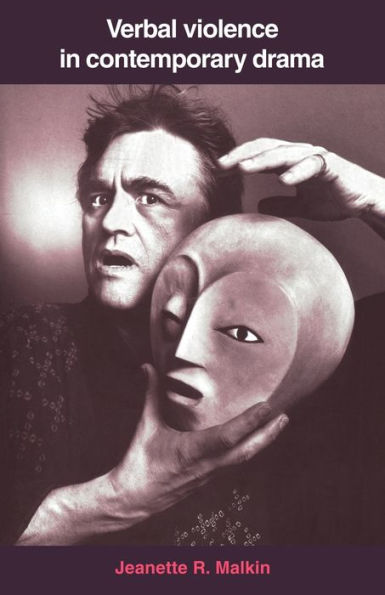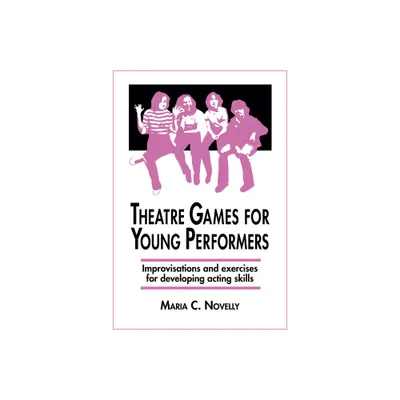Home
Plays of Impasse: Contemporary Drama Set Confining Institutions
Loading Inventory...
Barnes and Noble
Plays of Impasse: Contemporary Drama Set Confining Institutions
Current price: $156.00


Barnes and Noble
Plays of Impasse: Contemporary Drama Set Confining Institutions
Current price: $156.00
Loading Inventory...
Size: Hardcover
*Product Information may vary - to confirm product availability, pricing, and additional information please contact Barnes and Noble
A study of post–World War II plays set in “total institutions” such as hospitals, psychiatric wards, prisons, and military bases
Plays of Impasse
probes the structure and significance of the numerous and highly visible plays set in contemporary society’s dead ends—the hospitals, psychiatric wards, prisons, and military training camps so aptly described by Irving Goffman as “total institutions.” Carol Rosen shows how the setting in these plays tends to engulf and then to exclude the audience, turning an encompassing stage structure—a closed, controlling, absolute system—into a protagonist that overwhelms the characters. In discussions ranging from Harold Pinter’s
The Hothouse
to Samuel Beckett’s
Endgame
, she further maintains that the impasse of characters in reductive environments supplies a unifying image for post–World War II drama in general.
This state of impasse pervades contemporary drama. Everyday activities and attempts to endure life in a parenthesis are vacated of traditional social or moral meaning onstage. The pain of this kind of survival, spatially fixed, is at the heart of
, for example, an extreme instance of this mode of drama at the edge of existence.
In plays such as Peter Nichols’s
The National Health
, Peter Weiss’s
Marat/Sade
, Friedrich Dürrenmatt’s
The Physicists
, David Storey’s
Home
, Brendan Behan’s
The Quare Fellow
, Jean Genet’s
Deathwatch
, and David Rabe’s
The Basic Training of Pavlo Hummel
, the splintered self, like the divided society, strives to endure against enormous, codified odds. Even in plays not depicting the rigidity of institutions, the contemporary dramatic mode is finally characterized by sparse, introspective action in a closed system—an onstage model of a world gone awry, a world at an impasse.
Originally published in 1983.
The
Princeton Legacy Library
uses the latest print-on-demand technology to again make available previously out-of-print books from the distinguished backlist of Princeton University Press. These editions preserve the original texts of these important books while presenting them in durable paperback and hardcover editions. The goal of the Princeton Legacy Library is to vastly increase access to the rich scholarly heritage found in the thousands of books published by Princeton University Press since its founding in 1905.
Plays of Impasse
probes the structure and significance of the numerous and highly visible plays set in contemporary society’s dead ends—the hospitals, psychiatric wards, prisons, and military training camps so aptly described by Irving Goffman as “total institutions.” Carol Rosen shows how the setting in these plays tends to engulf and then to exclude the audience, turning an encompassing stage structure—a closed, controlling, absolute system—into a protagonist that overwhelms the characters. In discussions ranging from Harold Pinter’s
The Hothouse
to Samuel Beckett’s
Endgame
, she further maintains that the impasse of characters in reductive environments supplies a unifying image for post–World War II drama in general.
This state of impasse pervades contemporary drama. Everyday activities and attempts to endure life in a parenthesis are vacated of traditional social or moral meaning onstage. The pain of this kind of survival, spatially fixed, is at the heart of
, for example, an extreme instance of this mode of drama at the edge of existence.
In plays such as Peter Nichols’s
The National Health
, Peter Weiss’s
Marat/Sade
, Friedrich Dürrenmatt’s
The Physicists
, David Storey’s
Home
, Brendan Behan’s
The Quare Fellow
, Jean Genet’s
Deathwatch
, and David Rabe’s
The Basic Training of Pavlo Hummel
, the splintered self, like the divided society, strives to endure against enormous, codified odds. Even in plays not depicting the rigidity of institutions, the contemporary dramatic mode is finally characterized by sparse, introspective action in a closed system—an onstage model of a world gone awry, a world at an impasse.
Originally published in 1983.
The
Princeton Legacy Library
uses the latest print-on-demand technology to again make available previously out-of-print books from the distinguished backlist of Princeton University Press. These editions preserve the original texts of these important books while presenting them in durable paperback and hardcover editions. The goal of the Princeton Legacy Library is to vastly increase access to the rich scholarly heritage found in the thousands of books published by Princeton University Press since its founding in 1905.

















